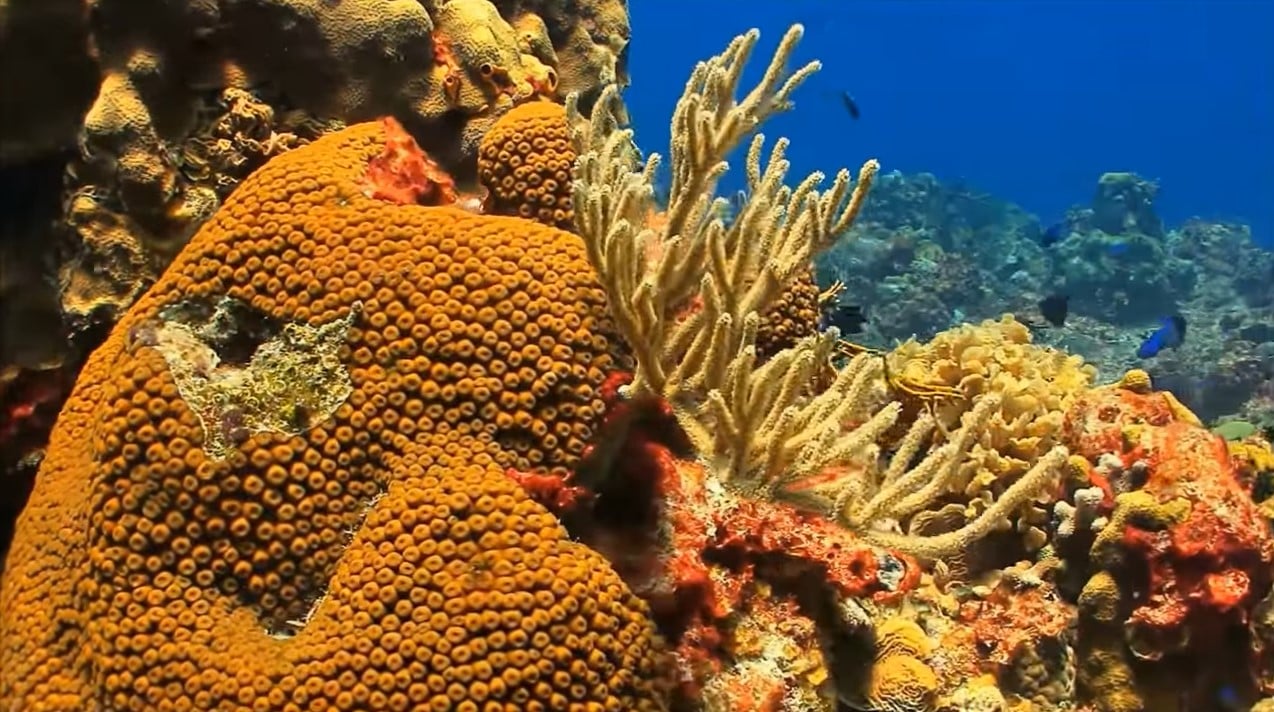It’s no secret coral reefs around the world are compromised as a result of various human activities, one of which is human-induced global warming, as well as fishing. Meanwhile, researchers face difficulties studying remote coral reef locations such as the Northwestern Hawaiian Islands (NWHI). However, a group of researchers at the University of Hawai’i (UH) at Mānoa found a way to observe mysterious coral reef halos from space.
Researchers found that coral reefs often have large halos of bare sand surrounding them, which can stretch around thousands of square meters. According to two recently published studies, both led by Elizabeth Madin, assistant research professor at the Hawai’i Institute of Marine Biology (HIMB) in the UH at Mānoa School of Ocean and Earth Science and Technology, it could be possible to use these halos to watch the coral reefs from space.
Researchers who have observed the reef halos for decades attribute this strange phenomenon to fish and invertebrates that hide in the patches of coral, finding their safety there from predators, it says in a statement. Madin’s research reveals more of the mystery and the halo features could help observe aspects of the reef ecosystem from a distance, particularly from space.
Madin’s new study was published in the journal Proceedings of the Royal Society B, where her and her team highlight that areas where fishing is forbidden, there is a different shape of seascope-scale vegetation which reflects on reef ecosystems, making coral reef halos occur.
The team believed that if the “formation of the halos was driven by small fish’s fear of being eaten, so the number of predators around should be linked to whether these bare patches appear and how big they are,” Madin explained to New Scientist. “With fewer predators, you would expect the grazing fish to be less fearful and so venture further from the reef, resulting in wider halos.”
Madin and her team, using available satellite resources, were surprised upon learning that they saw no difference in the size of halos inside or outside the marine reserves, with fishing allowed or prohibited. However, they found that non-fishing reserves had a higher potential of reef halos occurring.
Madin and her team also suggest with their new work that researchers can use coral reef halos to determine whether a coral reef is in a healthy state, as well as observing the overall state of the ecosystem. Madin’s current studies indicate that halos may appear and disappear over time, as well as change in size, possibly from environmental factors.
“We urgently need more cost- and time-efficient ways of monitoring such reefs,” Madin was quoted in the statement. “Our work couples freely-available satellite imagery, with traditional field-based experiments and observations, to start to unravel the mystery of what the globally-widespread patterns of ‘halos’ around coral reefs can tell us about how reef ecosystems may be changing over space and/or time due to fisheries or marine reserves. This will therefore pave the way for the development of a novel, technology-based solution to the challenge of monitoring large areas of coral reef and enable management of healthy reef ecosystems and sustainable fisheries.”





